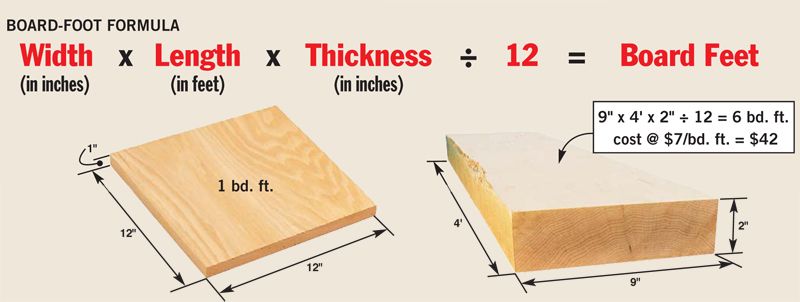Measurement and Conversion Calculators
Doyle Log Scale
Estimating Board Feet in timber and logs
There are three common scales or rules used in the industry (Doyle, Scribner, and International), but the Doyle scale is the most commonly used in the Southern Indiana locale. All three of the scales estimate logs closely in the medium to larger size range. In comparison, the Doyle underestimates footage on the smaller logs, which helps to account for extra log handling costs.
The formula for the scale is based on a tapered cylinder, milled with a 1/4″ kerf. Straight logs, with little taper and cut on a thin-kerf bandsaw, like our mill will yield more lumber than the scale predicts. It typically averages out, because logs are usually not so perfect, and often have boards that are below-grade and end up in the firewood pile.
To use the scale, first measure the average diameter of the small end of the log inside the bark (in inches). Locate that row on the scale. Next, measure the length of the log (in feet). Move over on the scale to that length column. Where those two measurements intersect, you will find the board footage for that log. The process must be repeated for each log. Deductions are made for defects, like rot and curved logs.
A little perspective on log sizes: A respectable diameter on a hardwood tree is 20″, a large diameter on a hardwood tree is 30+” and the smallest diameter most hardwood mills buy is 12″.



